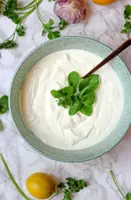Indian pickles have been around for thousands of years, but the practice of making homemade pickles is dying out among younger people in Malaysia. — Photo: SHARMINE SEH
In India, achar (which means pickle in Hindi) has been a staple for thousands of years. The sharp, acerbic, sweet, spicy, salty condiment which typically accompanies Indian meals has its roots in BCE 2030 in the Tigris Valley. It is here, according to the New York Food Museum’s pickle history that cucumbers native to India were first pickled.
Over the centuries, achars have continued to be ever popular, with common variants like young mango, lime, ginger and gooseberry reigning supreme. Pickling is also a popular way to preserve the shelf life of vegetables, seafood and meat, which means achars typically travel well. Indian-style pickles are also utilised to jazz up everyday meals – adding hits of saltiness, tanginess and spice to otherwise lacklustre victuals.





